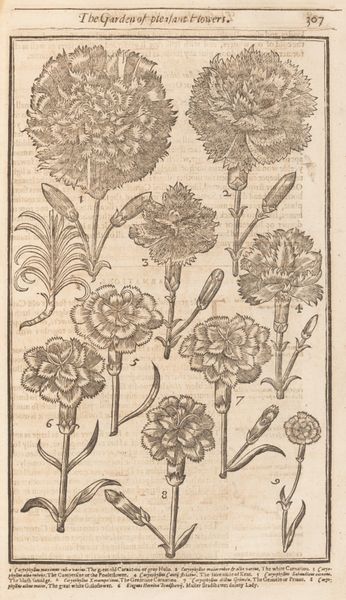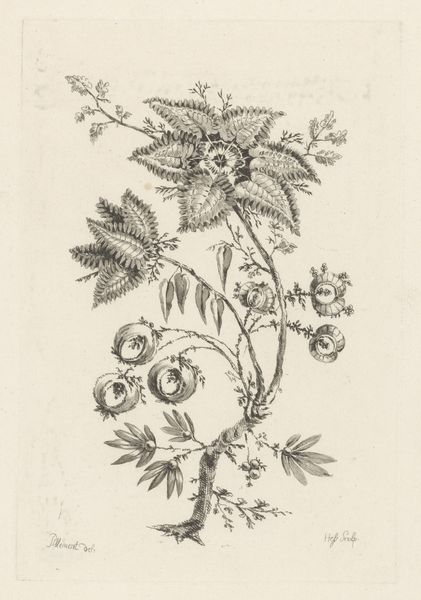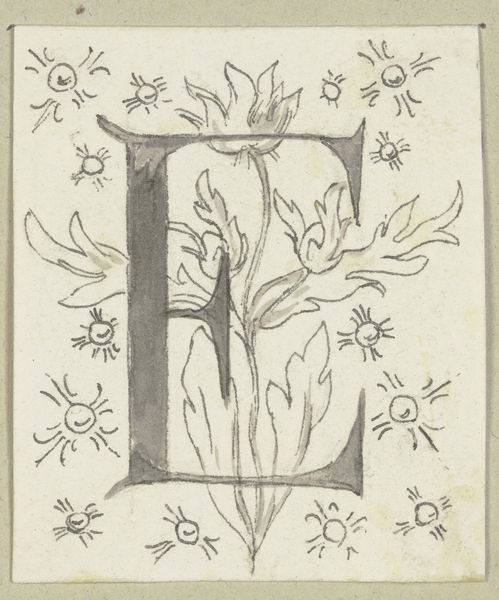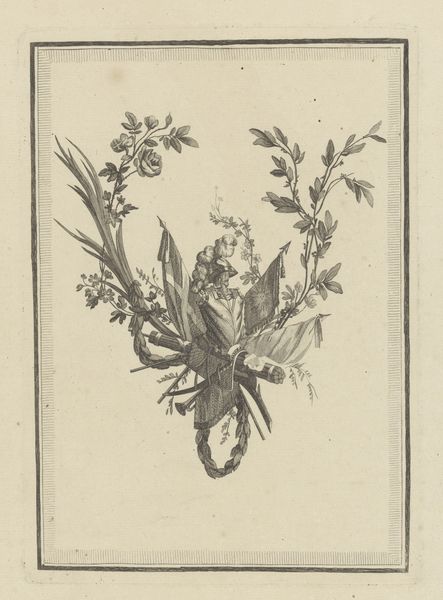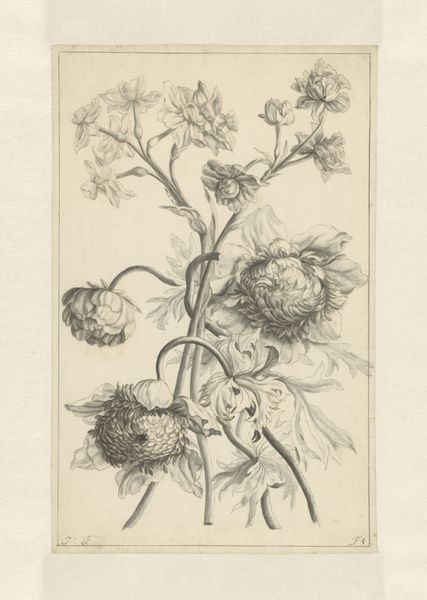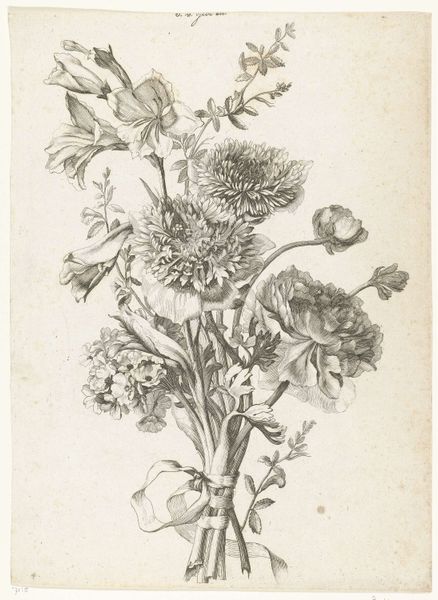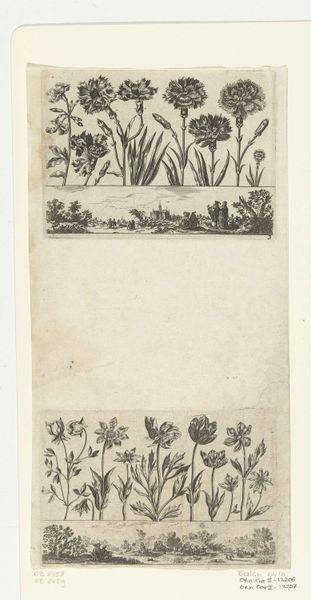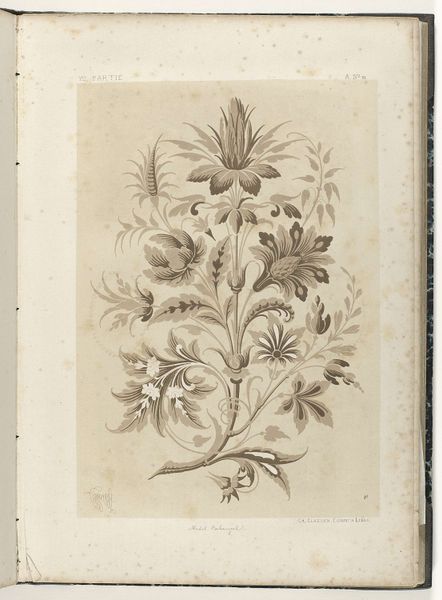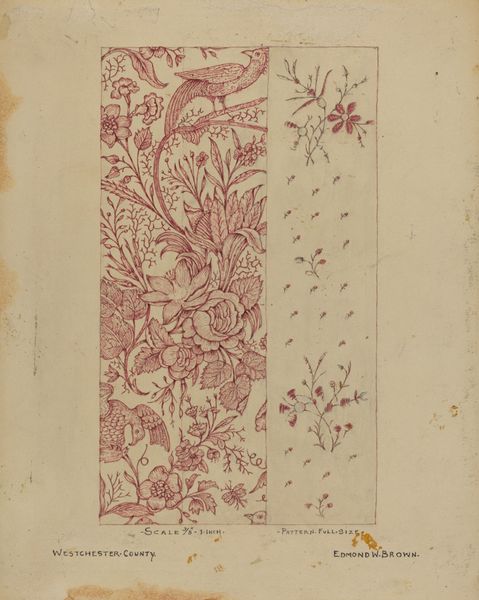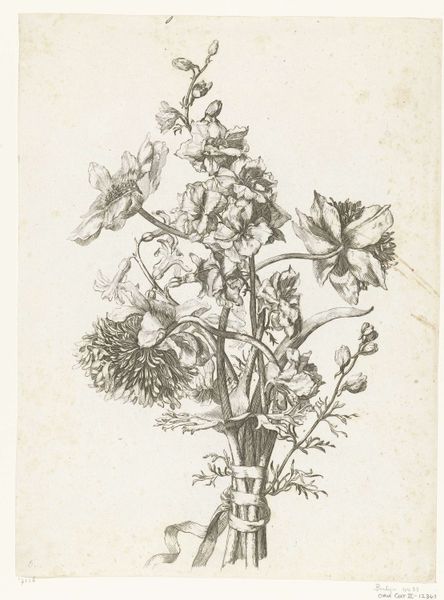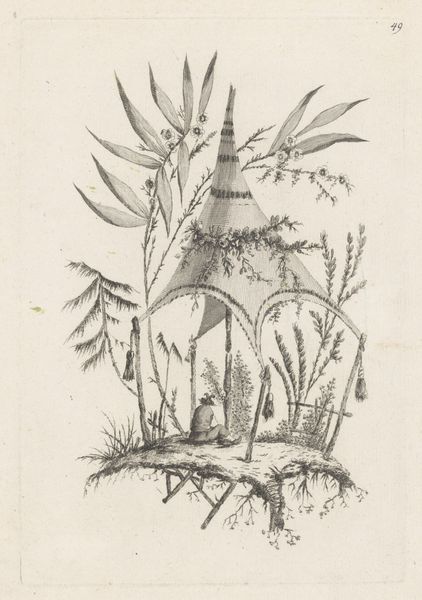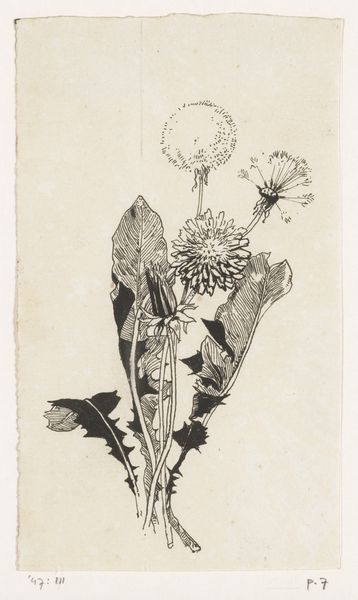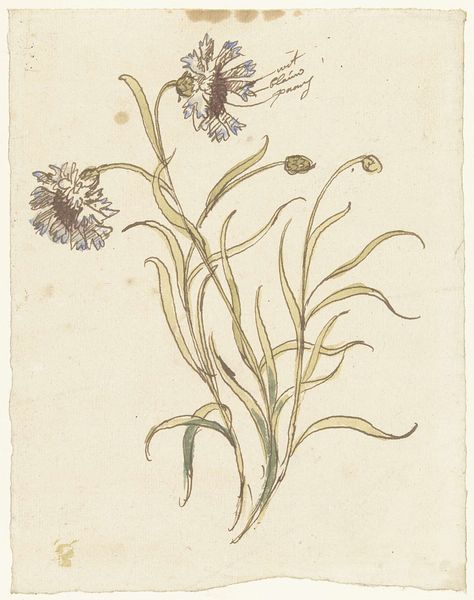
drawing, print, etching, paper, ink
#
drawing
# print
#
etching
#
landscape
#
figuration
#
paper
#
vanitas
#
ink
#
pencil drawing
#
plant
#
history-painting
Dimensions: Sheet: 10 3/8 × 7 1/16 in. (26.4 × 18 cm) Plate: 6 3/4 × 4 1/4 in. (17.1 × 10.8 cm)
Copyright: Public Domain
Curator: Before us is Félix Bracquemond’s frontispiece for Baudelaire’s "Les Fleurs du Mal," created in 1857. The artwork employs etching and ink on paper. What’s your initial take? Editor: Stark. It's like a macabre garden. The skeleton presiding over the flora creates an immediate sense of morbidity. It is the perfect invitation to Baudelaire's dark world. Curator: Bracquemond, like many artists associated with Baudelaire, was navigating the shifting artistic landscape of mid-19th century France. Baudelaire, of course, was a controversial figure. Bracquemond designed this arresting vanitas scene to frame Baudelaire's transgressive and honest verse. Editor: Absolutely. Vanitas imagery – the skull and decaying vegetation – traditionally reminds us of mortality, of the ephemeral nature of life, beauty, and earthly pleasures. The symbolic vocabulary in that frontispiece points to much older traditions while forging new expressive territories for darker and repressed themes of modernity. Do you read the plants as direct signifiers? Curator: Well, the arrangement does invoke older traditions of floral symbolism. However, in the context of "Les Fleurs du Mal", the plants acquire an added dimension. Consider the concept of "extracting beauty from evil," as explored in Baudelaire's poems. The plants could suggest the duality and interconnectedness of beauty and decay. The thistle comes to mind. The very shape hints to the torment expressed in Les Fleurs du Mal. Editor: That interplay between attraction and repulsion is key. I think it adds an intriguing layer to this seemingly simple illustration. It promises a complex and contradictory experience. Curator: It really challenges us to look beyond the conventional beauty and see value in unconventional places. And, from an institutional perspective, its placement as a frontispiece underscores the role of art in shaping literary reception, sometimes sparking cultural change, in this instance contributing to create the very idea of modernity. Editor: Exactly. It sets the stage, priming the reader to look beyond surface appearances and engage with the darker, more complex aspects of human existence. The perfect prelude for a work like "Les Fleurs du Mal". Curator: Indeed, and revisiting this reminds us how artistic visuals become culturally loaded, even after so many years. Editor: Precisely; it showcases how symbols can bridge different eras, creating a conversation across time.
Comments
No comments
Be the first to comment and join the conversation on the ultimate creative platform.
